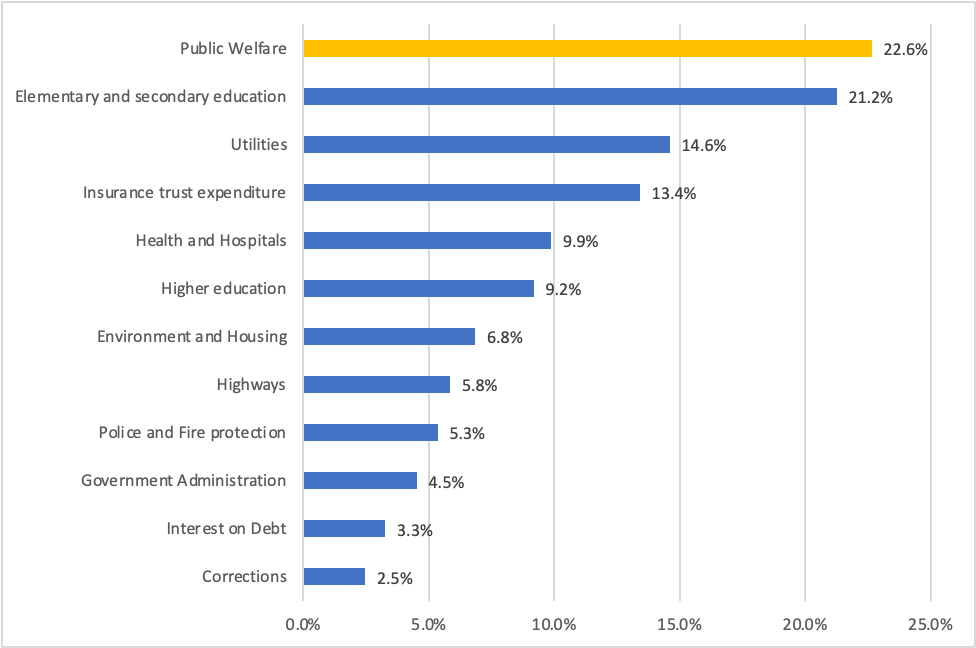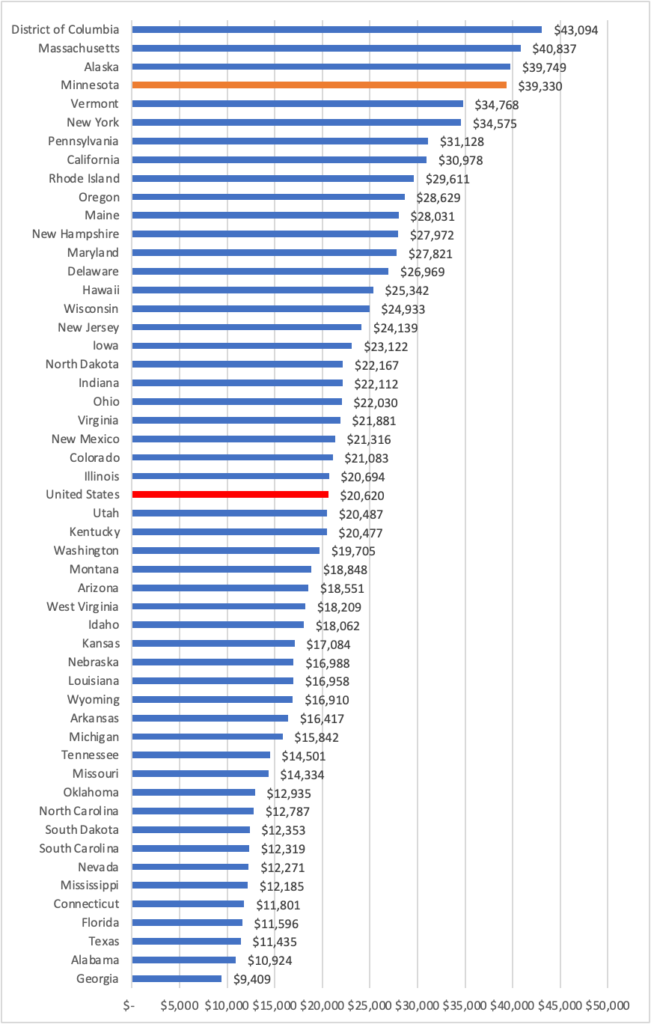Why Walz shouldn’t give the DHS more money, part two
As I explained in an earlier post, the DHS takes quite a huge chunk of the state budget already, so giving the agency more money puts pressure on other government services and could spell trouble for the state budget in times of scarce resources. But this is not the only reason that giving more money to DHS is probably not ideal.
Minnesota also spends more than most states on programs administered by the DHS — programs that come under the umbrella term “public welfare.” Spending more money is unlikely to solve the ails being faced by less fortunate Minnesotans.
Public welfare
The U.S. Census Bureau defines public welfare as any government spending targeted toward assistance programs for low-income individuals. While most people associate welfare with checks, it is much more than that. Welfare includes big government programs like Medicaid and Medicare, as well as other programs like childcare assistance, food stamps, housing assistance cash checks.
In the state of Minnesota, the administration of these programs — falls under the Department of Human Services (DHS). For that reason, spending by DHS is taken to mean Welfare spending.
How Much Minnesota spends on welfare
The United States generally spends a lot on public welfare. In 2020, for example, a little over a fifth of all state and local government spending went to programs that the U.S. Census Bureau considers welfare. But that is not all, however.
The US Census Bureau also records some Medicaid spending as part of health and hospitals. And in 2020, 10 percent of all state and local government spending went to Health and Hospitals, so it’s likely that the share of public spending is much higher.
Figure 1: Total direct general expenditure by function, United States (2020)

But while only 23 percent of all national spending went to public welfare, in Minnesota the percentage was much higher. In 2020, 27 percent of all state and local government went to public welfare.
Figure 2: Total Direct General expenditure by function, Minnesota (2020)

Not only does Welfare take a bigger chunk of Minnesota’s budget than the national average, but the per capita spending is also significantly higher. In 2020, Minnesota spent nearly $40,000 on public welfare per person in poverty. This is double the national average and the fourth-highest expenditure in the nation.
Figure: Spending on public welfare per person in poverty

Looking at specific programs, Minnesota has some of the country’s spending levels for Medicaid, even after controlling for age and disability. In 2019, Minnesota had the country’s:
- Third highest Medicaid spending per enrollee (full or partial)
- Second highest Medicaid spending per senior enrollee — 65 and older
- Highest Medicaid benefit level per disabled enrollee
- 19th and 23rd highest Medicaid spending per child and adult enrollee respectively
Figure: Medicaid spending per enrollee, 2019

This generosity also extends to other programs like welfare checks — officially known as Temporary Assistance for Needy Families (TANF). Compared to the rest of the country, Minnesota has higher than average income eligibility levels, higher than average cash benefits, and also provides cash assistance to a higher proportion of poor people than the national average.
The DHS does not need more money
Not only does the DHS already take up a big chunk of the Minnesota state budget, but our state already spends significantly higher on public welfare programs than does the rest of the country.